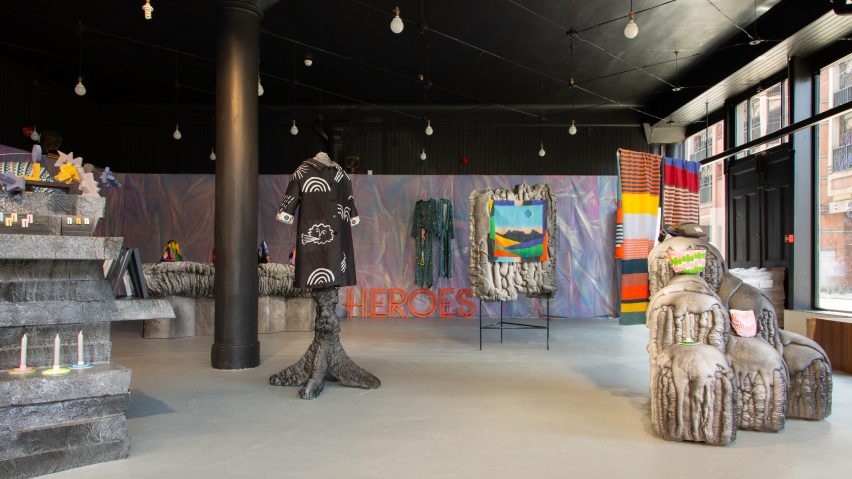
Scottish design is not all "tartan and tourist tat" says curator of Made in Glasgow exhibition
An exhibition has opened in Glasgow showcasing the best of contemporary Scottish design. Curator Stacey Hunter talks Dezeen through her highlights, which include a raincoat printed with hand-drawn weather symbols and silk scarves depicting the lovers of Ettore Sottsass.
Made in Glasgow by Local Heroes is an exhibition and shop displaying work by over 20 designers and studios from Glasgow, which is being staged to coincide with the Berlin/Glasgow 2018 European Championships.
The design showcase, which opened on 28 July and runs until 12 August 2018, aims to promote work being produced by creatives across Glasgow.
Scottish design industry needs support
Hunter, who founded curatorial agency Local Heroes in 2015 to present the work of designers based in Scotland, was keen to put together a presentation that demonstrates the established and emerging talent contributing to the country's creative economy.
"I think Scottish designers are at a bit of a disadvantage at the moment because no one is taking responsibility for supporting this industry," she told Dezeen. "Contemporary Scottish design is often obscured by the Scotland brand, which is focused on heritage and tradition, on tartan and tourist tat."
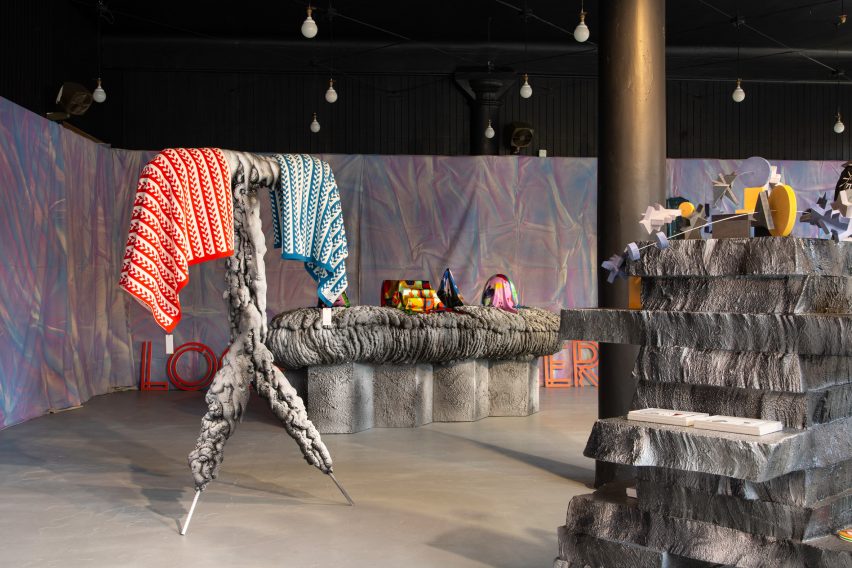
In addition to presenting existing work by some of her favourite designers and studios, Hunter commissioned 12 new pieces in order to give some of the participants an opportunity to develop personal projects.
The new items include a jesmonite trivet by Scott Crawford and Cecilia Stamp's collection of lapel pins and earrings inspired by Glasgow's subway system.
A colourful candle holder by Berlin-based studio Kolor is also on display, as a nod to the other city involved in co-hosting the inaugural European Championships, while Trakke is showing an updated version of a bumbag manufactured using a fabric made from stinging nettles.
Exhibition occupies a vacant Glasgow shop
The exhibition is supported by the Glasgow Chamber of Commerce, Creative Scotland and Glasgow City Council. It is mounted in a vacant shop in the Merchant City area, which many visitors pass through on the way to and from the city centre.
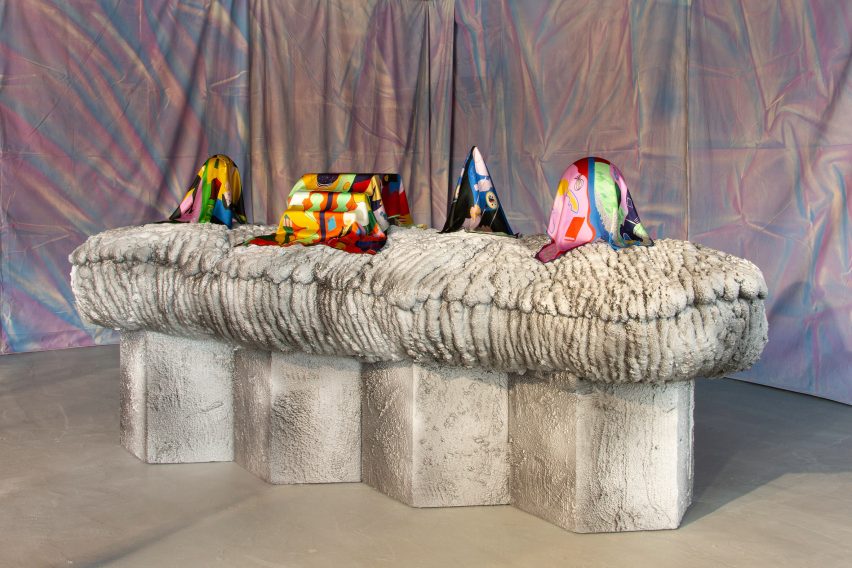
Hunter collaborated with local artist Steff Norwood on a bold design for the retail space, intended to eschew the traditional convention of displaying items on shelves. Instead, Norwood created a series of sculptural plinths with a geological aesthetic that references Scotland’s diverse landscapes.
"The rationale was to ensure the design of the space helps to attract people to come and see the designers' work, so I wanted to do something that's dramatic and Instagrammable," the curator explained.
The event is a follow up to the first Local Heroes exhibition in 2016, which presented a contemporary Scottish design to a global audience at Edinburgh Airport.
Here are Hunter’s five highlights from the show:
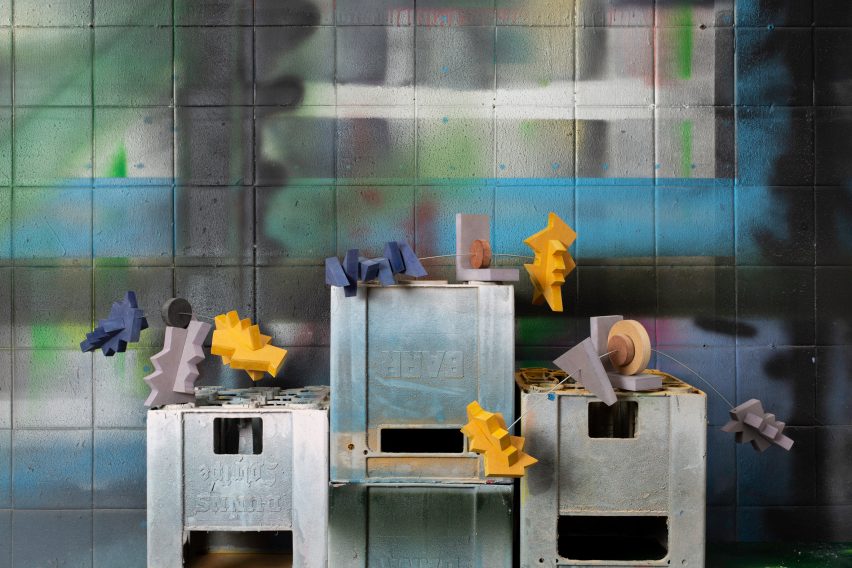
Balancing Act by Gabriella Marcella of Risotto
Marcella worked on her commission during a residency at the Jan Van Eyck Academie in Maastricht. The designer and founder of risograph print studio Risotto was initially interested in developing a series of ceiling mobiles, but instead began experimenting with salvaged materials to create sculptures that can be used to transform unoccupied corners of the home.
The collection of wooden parts can be threaded onto a wire in various configurations to create playful compositions with a precise balancing point. The process of combining the interactive elements involves the user in the act of making.
"I asked Gabriella to work on something three-dimensional as a lot of her past work was very two-dimensional," explained Hunter. "The way the pieces are put together encourages the customer to use their own intuition to find the balancing point and transform an unused space in their home like the corner of a bookcase or a mantelpiece."
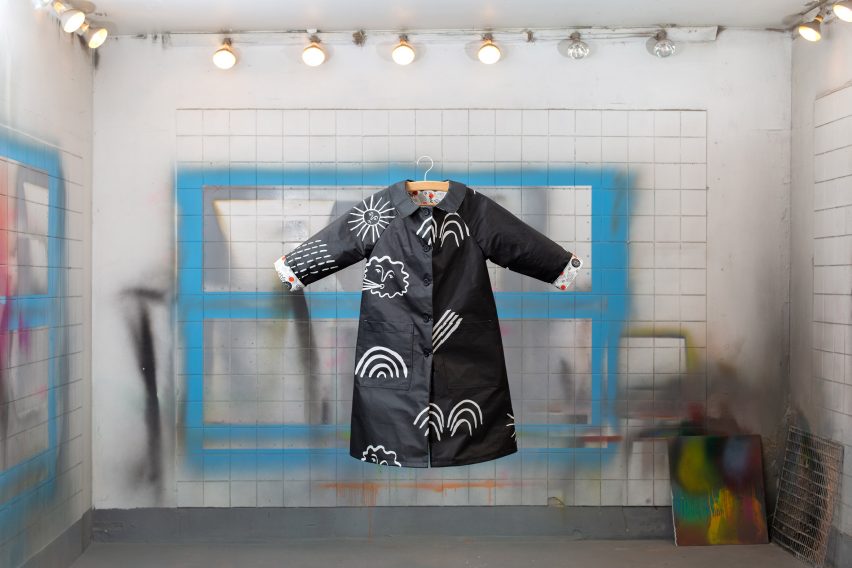
The Glasgow Raincoat by Love & Squalor and Alice Dansey-Wright
Designers Rebecca Coyle of Love & Squalor and Alice Dansey-Wright collaborated on the design of this raincoat, which is intended as a playful nod to Glasgow's notoriously fickle weather.
"I knew I wanted something called the Glasgow raincoat to be part of the show because Glasgow is such a cool and young city, which is also known for being quite wet," Hunter pointed out. "I felt this was the sort of product that would generate a positive response and it was an opportunity for two creatives who work in the same neighbourhood to collaborate."
Coyle, is a designer, maker and founder of fashion brand Love & Squalor, which is based in the city's West End. Dansey-Wright is an illustrator who paints murals and delivers public art projects inspired by the body, fashion design and textiles.
The Glasgow Raincoat's shape and cut were designed by Coyle, while Dansey-Wright produced the hand-drawn weather motifs printed onto the limited-edition garment. The pair worked together to choose the fabric and develop a prototype for the raincoat, which is one-size and unisex.
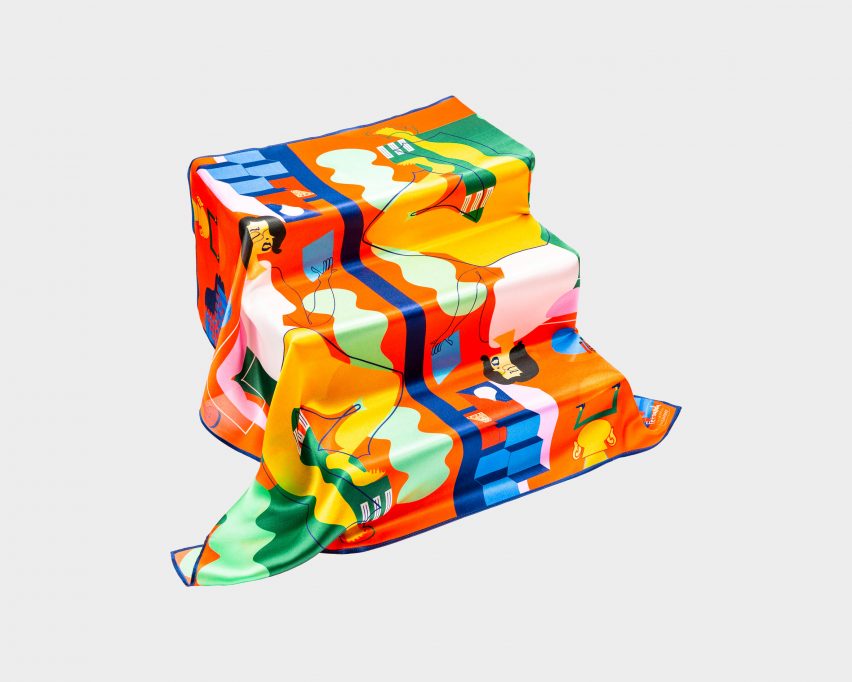
Le Zite Silk Scarves by Giulia Fiorista
Italian multidisciplinary designer Giulia Fiorista studied design in Milan, where she first encountered the work of Ettore Sottsass. After re-reading the legendary designer's autobiography in 2017, which would have been his 100th birthday, she rekindled a fascination that led her to illustrate his five lovers; Bobitza, Fernanda, Lina, Barbara and Geka.
The commission for the Made in Glasgow exhibition enabled Fiorista to apply her digitised drawings to a series of five silk scarves called Le Zite (Sicilian for The Girlfriends), which depict the women as they might have looked during their relationship with Sottsass. The brightly coloured images are typical of Fiorista’s flamboyant style and are printed onto lightweight silk squares.
"I haven't read Ettore Sottsass's autobiography because it's in Italian, so I have to rely on what Giulia has told me about it!" said Hunter. "It was such a personal project for her and I was really happy to be able to facilitate it becoming a product based on her original idea and sketches."
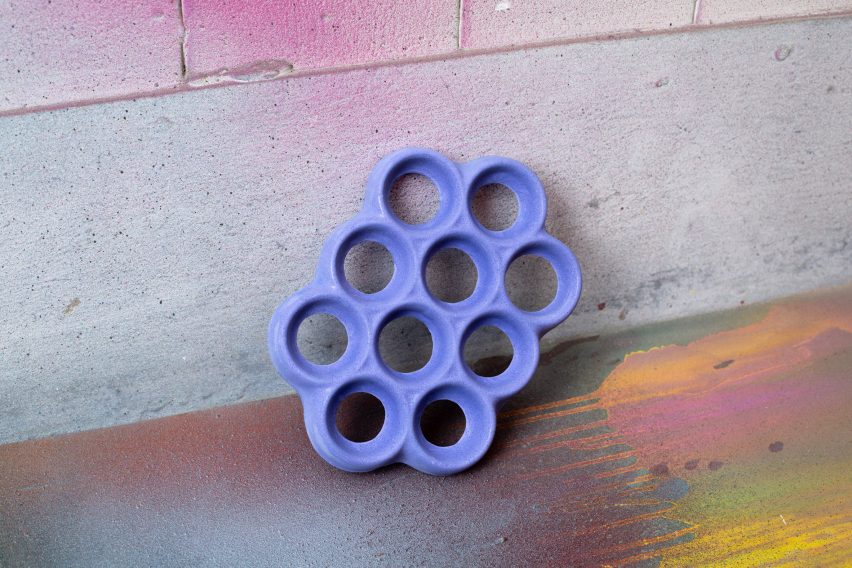
Conjoined Trivet in Blue Jesmonite by Scott Crawford
Scott Crawford combines digital processes with traditional craft techniques to produce items that aim to achieve a timeless sense of simplicity. He uses materials including ceramic, wood, cork, resins and metals to create products influenced by Scottish architecture, Scandinavian minimalism and brutalist principles.
The trivet included in the exhibition was originally produced by Crawford in terracotta as a versatile item that can be used for protecting surfaces, or as a plant stand or ornament. The designer took the opportunity to develop a new version for the exhibition using jesmonite – a composite material made by combining a gypsum-based material with acrylic resin.
"Scott had never really worked in colour before, so he was keen to reimagine the manufacturing process for this piece by mixing jesmonite to his own specification," Hunter explained. "I wanted to include him as an example of a young Scottish talent who has created a brand that already looks and feels mature."
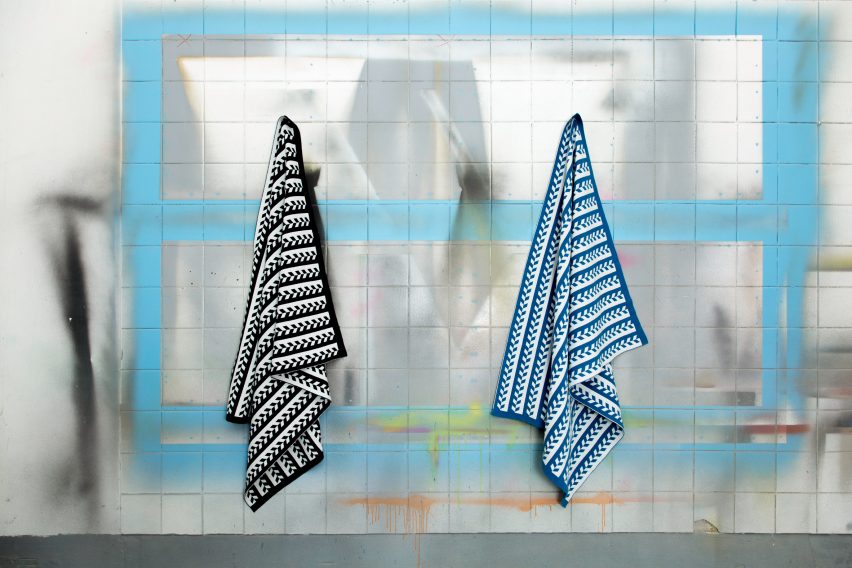
Transit Travel Blanket by Jennifer Kent
"The idea of using something from the past as a source of inspiration to create something completely new is a common theme in my studio's work," said designer Jennifer Kent, who based the pattern for her Transit Travel Blanket on a historical knitting pattern.
Kent reinterpreted the traditional design as a modern repeat pattern that evokes movement by referencing forms such as train tracks. The blanket is designed to be used to enhance comfort on long car journeys or flights, and is manufactured in Shetland in three colourways.
"Jennifer has an encyclopaedic knowledge of Scottish knitwear but manages to produce work that looks incredibly contemporary," said Hunter. "Her patterns have a sense of urgency or movement that I really like and they evoke motifs like the transit arrows you find in airports."